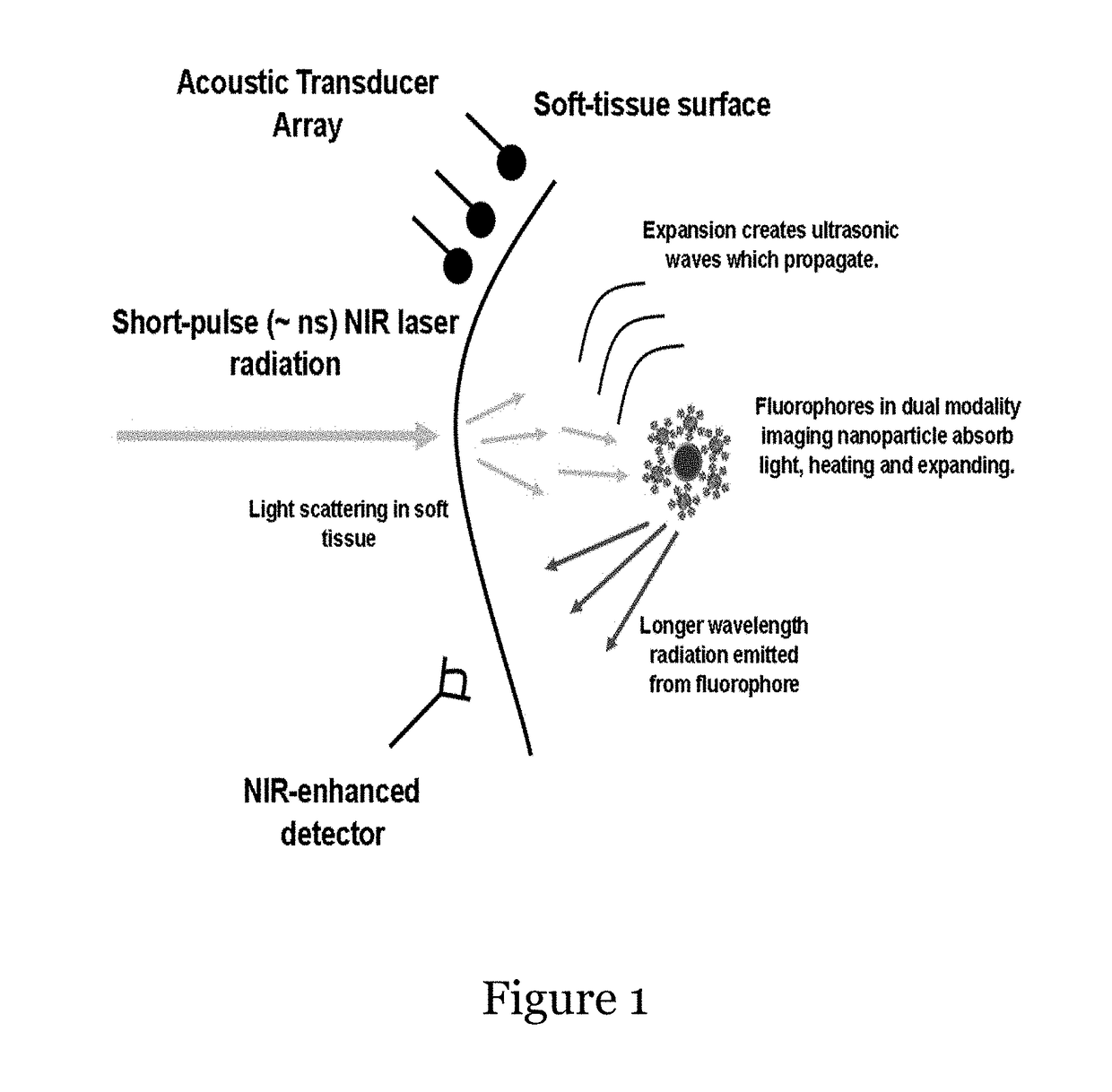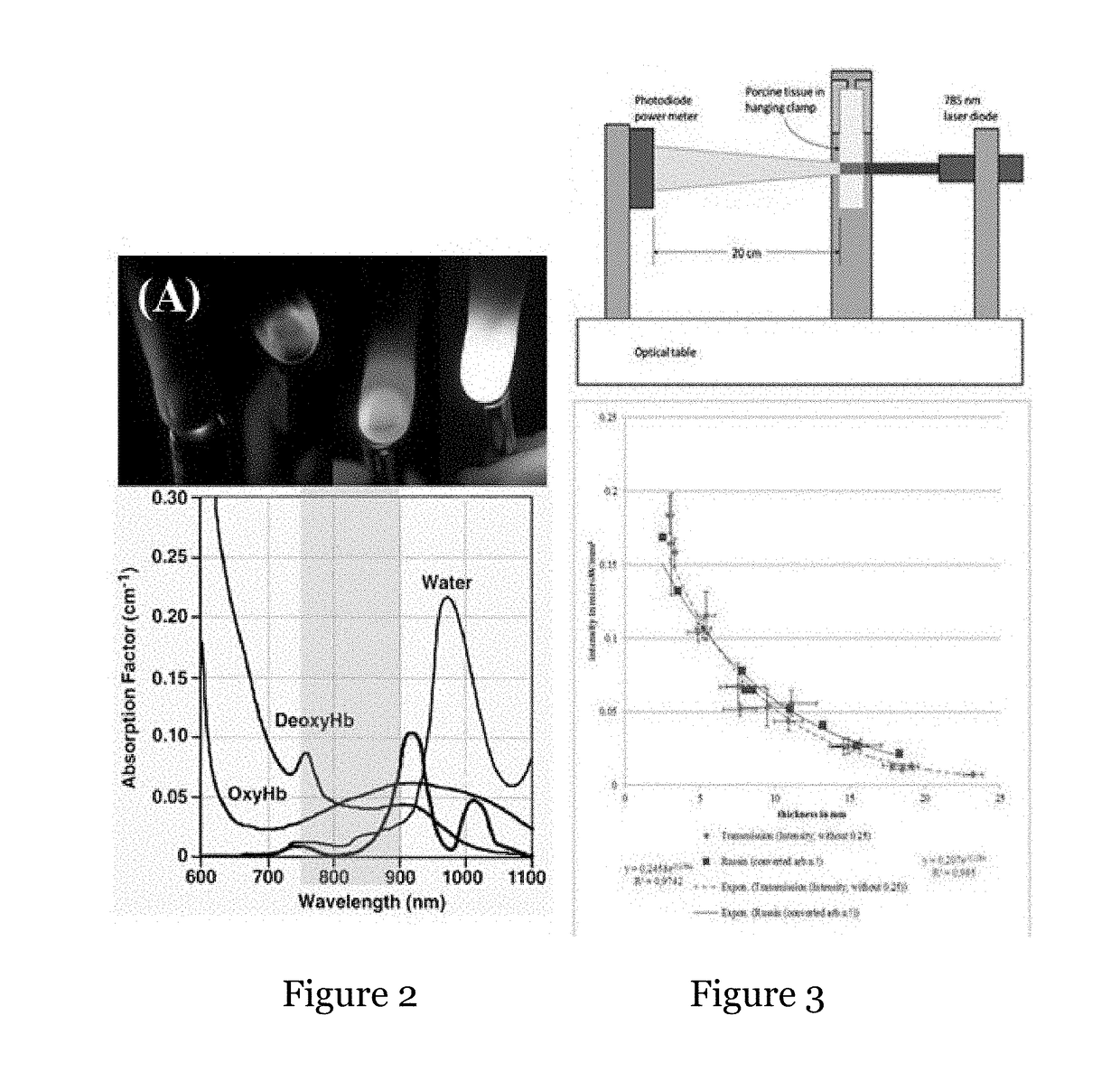Handheld device and multimodal contrast agent for early detection of human disease
a multi-modal contrast agent and hand-held technology, applied in the field of hand-held devices and multi-modal contrast agents for early detection of human diseases, can solve the problems of nir radiation from both the external source and the fluorescence of the dye, the obscuration of the wound dressing, and the inability to detect the disease at the same time, so as to improve the accuracy of deep tissue imaging and facilitate diagnosis. rapid
- Summary
- Abstract
- Description
- Claims
- Application Information
AI Technical Summary
Benefits of technology
Problems solved by technology
Method used
Image
Examples
example 1
[0086]The magnetite particles of the present disclosure in FIG. 6 have been evaluated as a function of dispersion in MRI and are shown in FIG. 7. While the poorly dispersed magnetite nanoparticles show local hypointense signal areas within each image, the well dispersed magnetite nano-particles produce a uniform signal change over the whole image. It is of great importance to use well dispersed magnetite nanoparticles to be able to draw reliable conclusions about the local concentrations of these particles (e.g. in tissue). Using the poorly dispersed magnetite nanoparticles could over / under estimate the local concentrations. The phantom experiments showed a huge drop of the apparent T2 relaxation time from 96 ms in the Agar phantom without magnetite nanoparticles, to 14 ms with only 0.01 mg / ml magnetite nanoparticles. A further decrease to 1.6 ms was observed when 0.1 mg / ml was used. Acquired T2 maps showed very homogeneous distributions of T2 over the whole phantoms.
PUM
 Login to View More
Login to View More Abstract
Description
Claims
Application Information
 Login to View More
Login to View More - R&D
- Intellectual Property
- Life Sciences
- Materials
- Tech Scout
- Unparalleled Data Quality
- Higher Quality Content
- 60% Fewer Hallucinations
Browse by: Latest US Patents, China's latest patents, Technical Efficacy Thesaurus, Application Domain, Technology Topic, Popular Technical Reports.
© 2025 PatSnap. All rights reserved.Legal|Privacy policy|Modern Slavery Act Transparency Statement|Sitemap|About US| Contact US: help@patsnap.com



